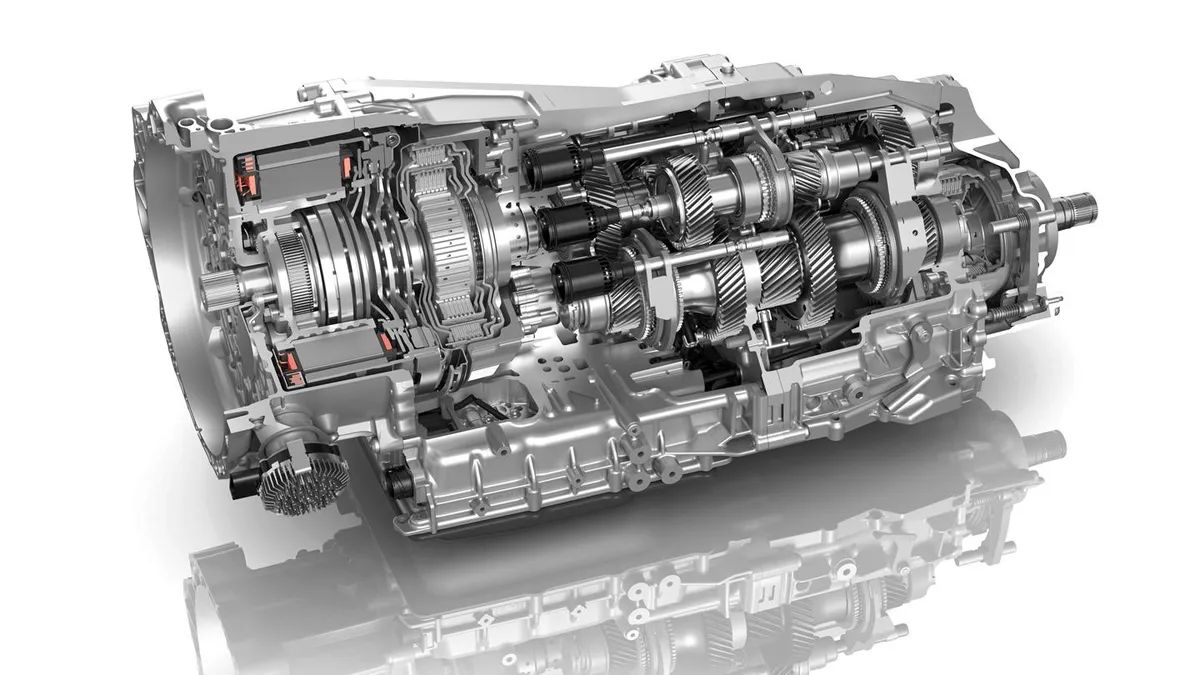The world of automotive engineering is constantly evolving, with manufacturers seeking innovative solutions to enhance vehicle performance, fuel efficiency, and driver experience. One groundbreaking technology that has captured the attention of enthusiasts and industry experts alike is the dual-clutch transmission (DCT).
What is a Dual-Clutch Transmission?

A dual-clutch transmission is a type of automated manual transmission that combines the best features of both manual and automatic transmissions. Unlike traditional automatic transmissions that use a torque converter, a DCT employs two separate clutches, each controlling a different set of gears. This unique design allows for lightning-fast gear shifts, delivering seamless and precise power delivery.
How Does a DCT Work?
The DCT operates by constantly having one clutch engaged while the other prepares for the next gear change. This process is facilitated by two separate shafts, each with its own set of gears. One shaft contains the odd-numbered gears (1st, 3rd, 5th, and reverse), while the other shaft houses the even-numbered gears (2nd, 4th, and 6th).
When the vehicle is in motion, one clutch is engaged, transferring power from the engine to the active gear set. Simultaneously, the other clutch is already pre-selecting the next gear, ensuring a seamless transition. As the driver accelerates or decelerates, the computer controlling the DCT disengages the active clutch and engages the pre-selected clutch, resulting in an incredibly fast and smooth gear change.
Advantages of DCT Transmissions

- Improved Fuel Efficiency: DCTs are generally more fuel-efficient than traditional automatic transmissions due to their inherent design and reduced energy losses. The absence of a power-sapping torque converter and the ability to select optimal gear ratios contribute to better fuel economy.
- Enhanced Performance: The rapid gear changes and precise power delivery of a DCT translate into superior acceleration and responsiveness. This feature is particularly appealing to performance enthusiasts and drivers who value a dynamic driving experience.
- Smooth Operation: Despite their lightning-fast gear changes, DCTs offer a remarkably smooth driving experience. The seamless transition between gears eliminates the jolting sensations often associated with traditional manual transmissions.
- Compact Design: DCTs are typically more compact and lighter than their conventional counterparts, resulting in reduced weight and improved vehicle dynamics.
- Driver Engagement: While DCTs are essentially automated, many manufacturers incorporate manual override capabilities, allowing drivers to take control and shift gears manually using paddle shifters or a traditional gear lever.
Drawbacks and Challenges
While DCTs offer numerous advantages, they are not without their challenges. One potential drawback is the initial cost, as DCTs are typically more expensive to manufacture than traditional automatic transmissions. Additionally, some drivers may perceive a slight delay in gear changes, particularly when accelerating from a standstill.
Furthermore, DCTs require specialized maintenance and repair procedures, which can be more complex and costly than traditional transmissions. Proper care and adherence to maintenance schedules are crucial to ensure long-term reliability.
The Future of DCT Transmissions
As automotive technology continues to evolve, DCT transmissions are likely to play an increasingly significant role in the industry. With their impressive performance capabilities, fuel-saving potential, and smooth operation, they offer a compelling solution for automakers seeking to meet the demands of modern drivers.
Moreover, the integration of DCTs with hybrid and electric powertrains is an area of active research and development. The combination of these technologies could yield even greater efficiency gains and enhanced driving experiences.
Conclusion
The dual-clutch transmission represents a notable breakthrough in automotive engineering, bridging the gap between the convenience of an automatic transmission and the performance of a manual gearbox.
Also Read:
- Transmission Slipping: A Comprehensive Guide
- How Long Do Alternators Last?
- What to Do When Your Car Loses Power But the Engine is Still Running
- Why Does My Car Jerk When Accelerating at Low Speeds?
- How Much Does Brake Caliper Replacement Cost in the USA?
As manufacturers continue to refine and advance this technology, DCTs are poised to become a prominent force in the automotive industry, delivering a driving experience that seamlessly blends power, efficiency, and driver engagement.


[…] The Innovative DCT Transmission: Shifting the Future of Automotive Performance […]
[…] The Innovative DCT Transmission: Shifting the Future of Automotive Performance […]